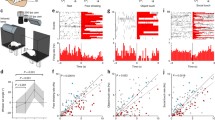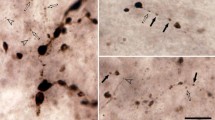Abstract
The structure of mammalian vibrissa was observed microscopically and the relationship of morphology and function was discussed. The vibrissa is conical. The elasticity and tenacity of vibrissa are stronger than that of pelage hair. The scales are shaped irregular on vibrissa shaft except for the root part, because of fractional damages. This type of scales is of great importance in preventing the vibrissa from being totally destroyed. Cortex of vibrissa is observed very well developed, thus its elasticity and tenacity work well in touching and sensing. Medulla of vibrissa is not well developed because vibrissa has been evaluated to fall in warm-kee** function.
Similar content being viewed by others
References
Asquith, T. N. and Butler, L. G. 1986. Interactions of condensed tannins with selected proteins. Phytochem,25: 1591–1593
Beart, J. E. and Lilley, T. H. 1985. Plant polyphenolssecondary metabolism and chemical defence. Phytochem,24: 33–38
Deschamps, A. M., Mahoudeau, G. and Conti, M. 1980. Bacteria degrading tannic acid and related compounds. J. Ferment. Techno.,58: 93–97
Goldstein, J. L. 1965. Changes in tannins in ripening fruits. Phytochem,2: 371–383
Goldstein, J. L. 1965. The inhibition of enzymes by tannins. Phytochem,4: 185–192
Haslam, E. 1979. Vegetable tannins. Biochmistry of plant phnolics (New York).15: 475–523
John, P. Bryant. 1992. Chemically mediated interactions between woody plants and browsing mammals. J. Range Manage,45: 18–24
Mcleod, M. N. 1974. Plant tannins role in forage quality. Nutr. Abst Rev.,44: 803–812.
Ra**der, K. Dawra. 1988. Protein-Binding capacity of microquanties of tannins. Analytical Biochemistry,170: 50–53
Rees, S. and Harborne, J. B. 1985. The role of sesquiteroene lactones and phenolics in chemical defence of the chicory plant. Phytochemistry,24: 2225
Author information
Authors and Affiliations
Additional information
(Responsible editor: Zhu Hong)
Rights and permissions
About this article
Cite this article
Yanli, B., Wei, Z., Yanchun, X. et al. Relationship between structure and function of mammalian vibrissa. Journal of Forestry Research 9, 273–282 (1998). https://doi.org/10.1007/BF02912334
Issue Date:
DOI: https://doi.org/10.1007/BF02912334




